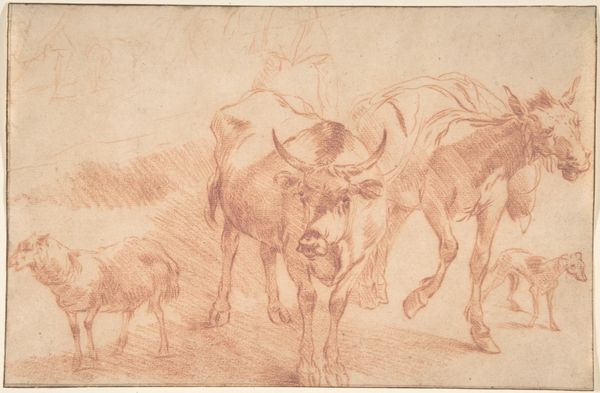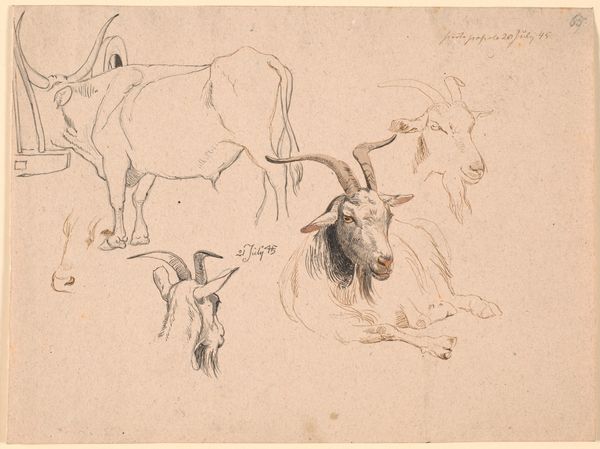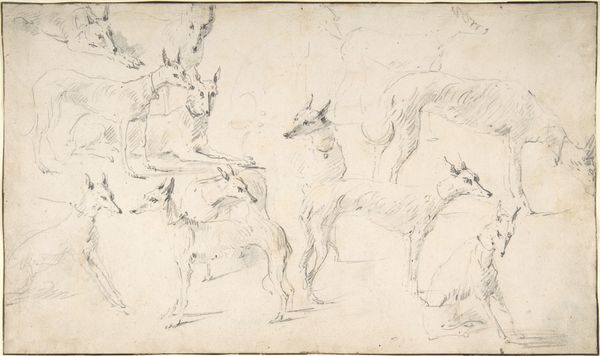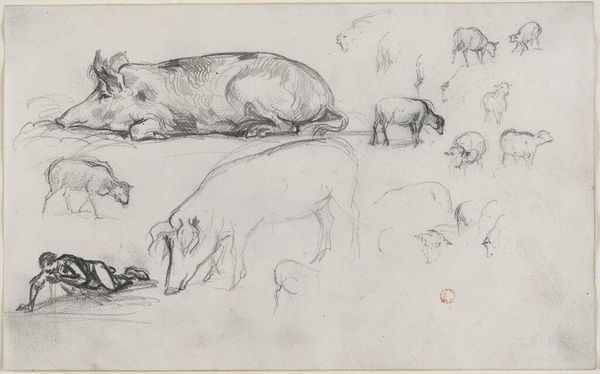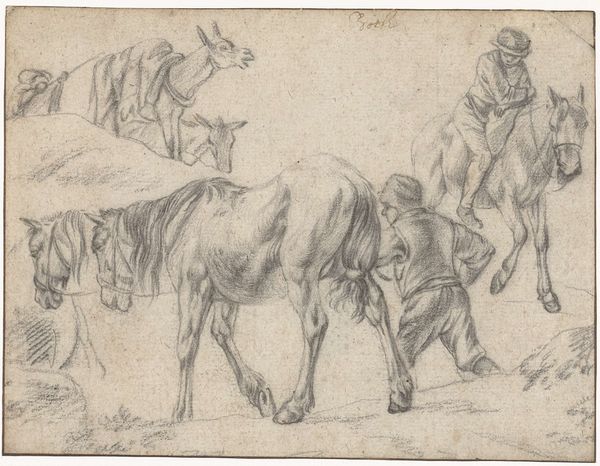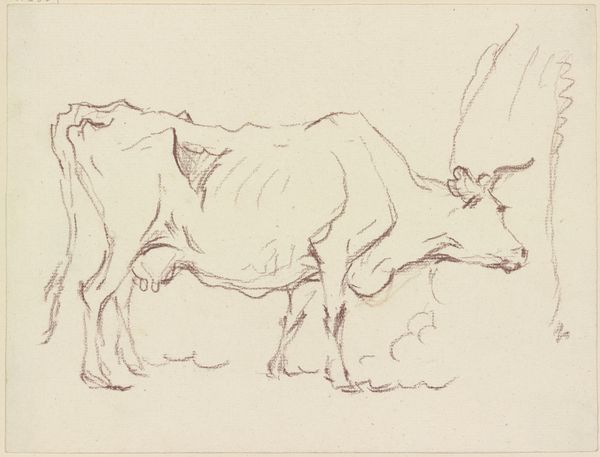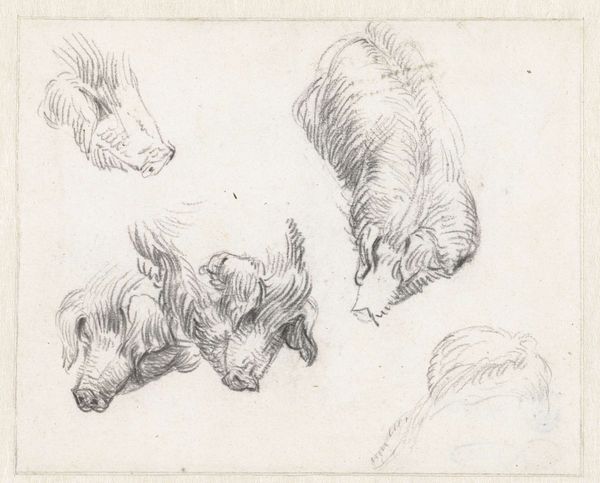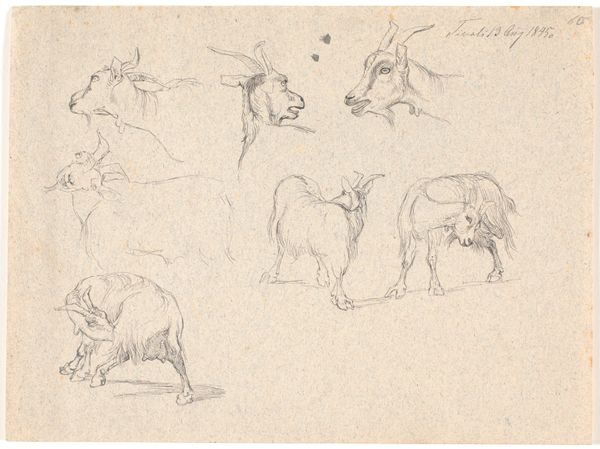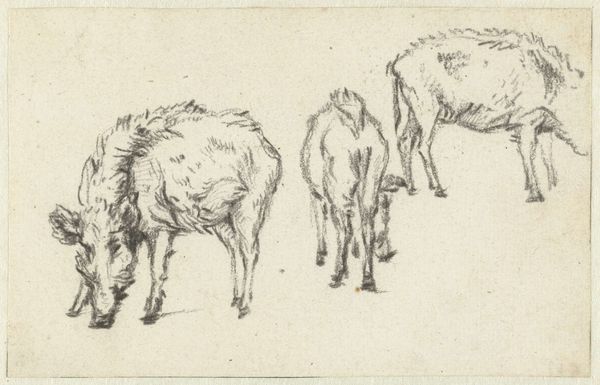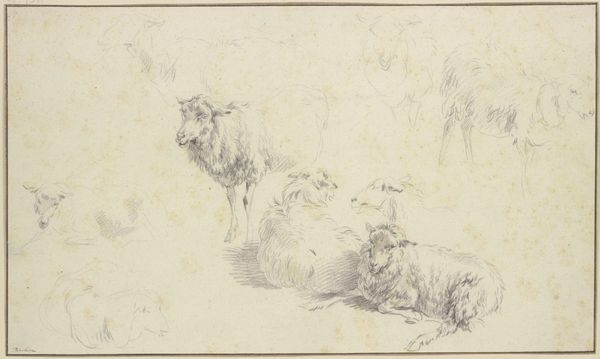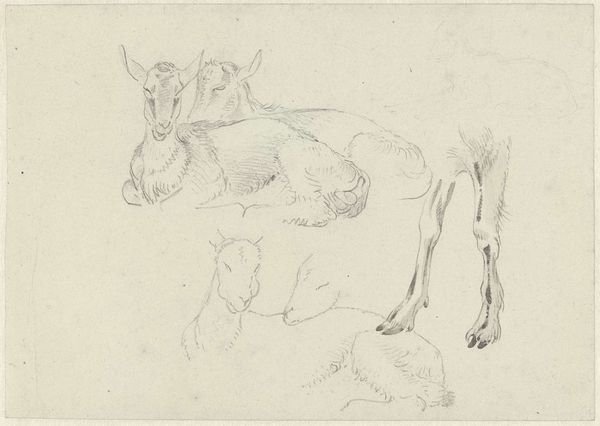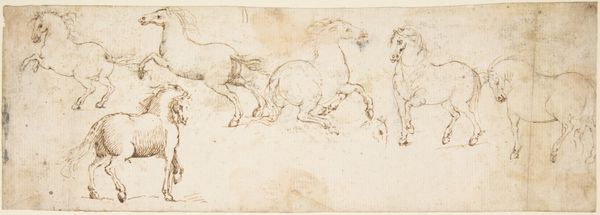
drawing, paper, ink, pencil, pen
#
drawing
#
light pencil work
#
quirky sketch
#
baroque
#
animal
#
pen sketch
#
pencil sketch
#
landscape
#
figuration
#
paper
#
personal sketchbook
#
ink
#
ink drawing experimentation
#
pen-ink sketch
#
pencil
#
pen work
#
sketchbook drawing
#
pen
#
sketchbook art
#
realism
Dimensions: height 199 mm, width 302 mm
Copyright: Rijks Museum: Open Domain
Curator: Here we have "Studies van een bok," or "Studies of a Goat," created sometime between 1641 and 1700 by Johann Heinrich Roos. It’s currently held at the Rijksmuseum. My first thought is that it could easily be mistaken as a notebook or a sketchbook work page from an artist experimenting in the medium. Editor: Immediately, I am drawn to the animalistic forms portrayed in Roos’s work, seeing how effectively they are created from rapid, yet careful linework. This is something akin to a flurry of energy in subdued grayscale. What kind of symbolic associations were linked to goats at this time? Curator: That's a fantastic question. We know that Roos worked extensively within court circles and his depictions of animals may have been informed by the symbolic menageries that were often a popular fixture. At this time, goats are not just animals; they’re signifiers of virility, stubbornness, and perhaps, pastoral abundance. The ruling classes were fascinated with portraying themselves in an Eden-like existence in the late Baroque period. Editor: Yes, I certainly see it. Each goat in this sketch takes on a different posture, which adds to the sense of individualism; I wonder if that says something about humanity reflected via this group of animals. Is he trying to create some sort of pastoral reflection of nobility itself? Curator: That’s plausible, certainly given the socio-political function art fulfilled during this era. Consider too the burgeoning art market at this time, we cannot neglect to discuss the potential of a piece like this to function within domestic display. Was Roos making studies to serve his work for elites or a different patronage? Editor: Absolutely. And to carry on that, it’s striking how the baroque landscape style interacts and integrates with figuration; the animals aren’t merely present; they are a critical part of that idealistic, rural imagery. The choice of a common animal takes the artwork from the lofty world of symbolism into relatable terms. Curator: I think this piece represents a fascinating intersection of the art market meeting social ideals of rural wealth, revealing much about both elite self-perception and the aspirations of a broader emerging art-consuming public in the late Baroque. Editor: It definitely underscores how symbolic and pastoral visions weren’t just about divine kings and mythical shepherds, but something much more familiar and ingrained in everyday life. These weren’t just studies of animals, they are very much explorations into human connection with the natural world as understood in that era.
Comments
No comments
Be the first to comment and join the conversation on the ultimate creative platform.

